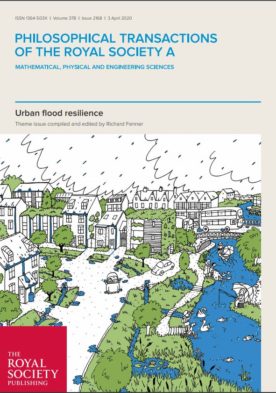An interdisciplinary and catchment approach to enhancing urban flood resilience: a Melbourne case
Abstract
This paper presents a novel interdisciplinary and catchment-based approach for exploring urban flood resilience. Our research identified and developed a diverse set of adaptation measures for Elwood, a suburb in Melbourne, Australia, that is vulnerable to pluvial and coastal flooding. We drew on methods from social science, urban design and environmental engineering to gain integrated insights into the opportunities for Elwood to increase its flood resilience and urban liveability. Results showed that an appropriate balance of social, infrastructural and urban design responses would be required to retreat from, accommodate and protect against flood risk. These would also deliver broader benefits such as securing water supplies through harvested stormwater and mitigating extreme heat through greener landscapes. Our interdisciplinary approach demonstrated the value of (i) engaging with the community to understand their concerns, aspirations and adaptation ideas, (ii) exploring design measures that densify and use urban forms in ways that implement adaptation measures while responding to local context, (iii) adopting modelling techniques to test the performance, robustness and economic viability of possible adaptation solutions, and (iv) innovating governance arrangements and principles needed to improve flood resilience in the Elster Creek catchment. Our research also provided valuable insight on how to operationalize interdisciplinary work in practice, highlighting the importance of sharing an impact agenda, taking a place-based approach, developing a common conceptual framework, and fostering a constructive team culture.
This article is part of the theme issue ‘Urban flood resilience’.
